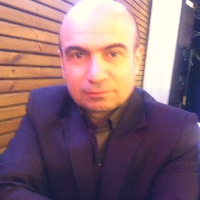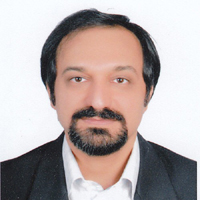An Analysis on the Narration Process in "One Thousand and One Nights" based on Semio-Semantic Approach
The modern semio-semantic approach has gone beyond structuralism and entered the realm of narrative discourse, creating the conditions for the production and acquisition of meaning in discourse. This paper, examines the process of narrating in One Thousand and One Nights from a semio-semantic perspective by analyzing the movement from the narrative structure to the narrative discourse systems using the Greimas model. The purpose of the study is to discover how embedded narrative structures leak into the discursive structures of the story, and the tense (sensory-perceptual) space created by the narrative process controls and recreates the process of meaning production. Analysis of the narrative process in this work shows that narratives are never formed without the formation of a discourse system. On the other hand, the resistance of the narrator, Shahrzad, changes the emotional crisis and the lack of meaning in Shahriyar during the narration of several narratives to change the meaning of the presence of change. Using the tools of narrative language, he changes Shahriyar’s socially deplorable situation and mental state, and finally Shahrzad’s energy injection and practice in the discourse space has caused unfavorable stabilized conditions to become liberating conditions, and Shahriyar is confronted with a new meaning of life in the world. These changes are the result of his Dasein mutations after hearing the story. Shahriyar, in order to be himself and to fill his emotional vacuum, by being in the path of narration, takes away his previous Dasein and enters a new Dasein. In order to reach a new Dasein, he must first discard his faulty and critical previous Dasein in order to enter a new and improved Dasein. This is what puts him in front of another meaning of life and existence. The changes resulting from the Daseini mutation in existential discourse system are sometimes so profound that it is difficult to see a trace of the past. Perhaps it can be admitted about Shahriyar that he was accompanied by a great Daseini leap and the resulting changes were so profound that they were also observed by the people of that land.
-
An Investigation into the Endangerment of Mazandarani based on UNESCO Model
Negin Eini *, Ahmad Rezaei,
Journal of Sociolinguistics, -
A comparative study of the influence of political discourses in the second half of the 1970s on the movie posters of "E’teraz” (Protest) and "Ajans-e Shishei” (The Glass Agency) based on semiotics
Ukabed Arefi, Hamidreza Shairi *, Parastoo Mohebi
Cultural History Studies, -
Semiotic analysis of the formation process of "discursive non-subject " in the paintings of Ahmad Morshedloo
Vida Ghassemi, Hamidreza Shairi*, Majid Ziaee
Journal of Islamic Crafts, -
The Approaches to Teaching Persian Writing Skill to Primary School Students
*
Journal of Research in elementary education,




